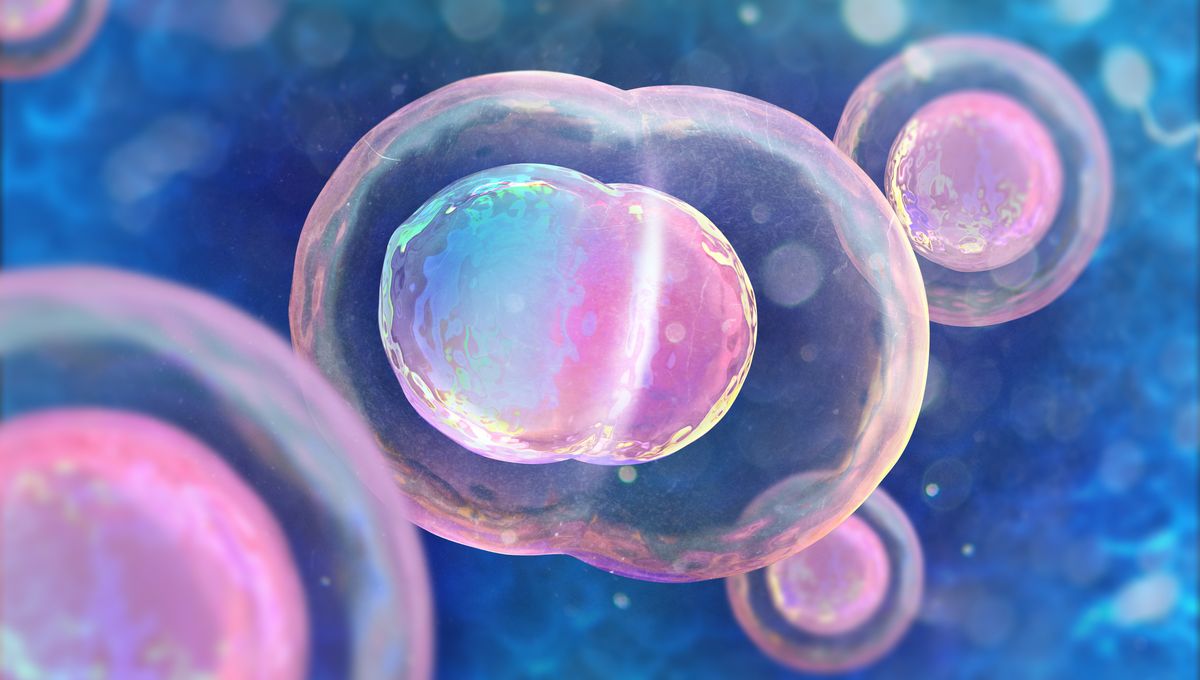
The molecular basis for a mutation that causes some people with XY chromosomes to have wombs and vaginas has been identified, demonstrating how minor the differences can be that shape people’s sex.
Swyer Syndrome (also known as 46, XY gonadal dysgenesis with female somatic phenotype) occurs in people whose sex chromosomes match most biological males, but who not only appear female, but can often give birth using IVF and donated eggs. In at least one case, a woman with a form of Swyer Syndrome became pregnant naturally, and didn’t know there was anything unusual about her chromosomes until her daughter was diagnosed with the same condition.
The syndrome involves modification to one of several genes on the Y chromosome, frequently the Sex-determining Region Y protein (SRY), the gene that usually starts the process of an embryo becoming male. One cause of Swyer Syndrome can be the replacement of tyrosine with the similar molecule phenylalanine, best known as a component of the sugar substitute aspartame. Two new papers explore how the change between these molecules – so similar they are interchangeable for many biological functions – can have such big effects.
“Loss of a single atom in SRY, an oxygen atom in a critical tyrosine, impairs the robustness of male development,” Professor Michael Weiss of Indiana University School of Medicine said in a statement.
The authors call it a “humpty-dumpty” model, because a small change can cause everything to break apart in a way that is apparently impossible to reverse.
The occurrence of Swyer Syndrome can reflect the fact that human sex determination is in a period of change, albeit slowly compared to social transformations.
“Normally, the father has XY chromosomes, and the daughter has XX chromosomes, but in some families the daughters can have XY chromosomes because there is a mutation in SRY,” Weiss said. “Sex chromosomes can be degenerative over evolutionary time scales, leading to new upstream switches being recruited as male-determining pathways grow backwards. Such initial steps can be tenuous in biochemical terms.”
The Y chromosome is so fragile that small changes at several points along it can interfere with male development, not all of which have been identified. Position 72 in SRY’s DNA-binding domain hadn’t been considered as one of these until Weiss and co-authors chose to look more deeply. They found tyrosine molecules at this point stabilize the DNA-protein bond, creating a “kinetic clamp”. This appears to be a common feature across mammals, and serves to control a process so old it may be universal to animals. Replacement of tyrosine with phenylalanine disrupts this sufficiently to induce Swyer Syndrome.
The team published accompanying papers reporting the significance of their find, and describing how the kinetic clamp works and is mediated by water molecules. It took years to understand what was going on because, as Dr Joseph Racca of Indiana University put it: “The normal and mutant version of SRY are so similar in standard experimental assays.” The team needed to model the behavior of water molecules next to the binding site to make sense of the clamp’s operation.
“A distinctive water molecule is anchored by the tyrosine as a bridge to the DNA,” Weiss said. “This special site of hydration is occupied for thousands of picoseconds, and then it will leave. But then another water molecule in the bulk solvent will almost immediately hop in its place, restoring the bridge.” In other words, the line between being male and female depends on a molecular process that lasts a few billionths of a second, albeit one that is constantly renewed.
Early identification of Swyer Syndrome is important, as without treatment it is frequently associated with early-onset gonadal cancer. It also commonly to requires hormone treatment to induce puberty.
The papers are published in Frontiers in Endocrinology here and here.
Source Link: How A Single Oxygen Atom Can Change A Person’s Sex